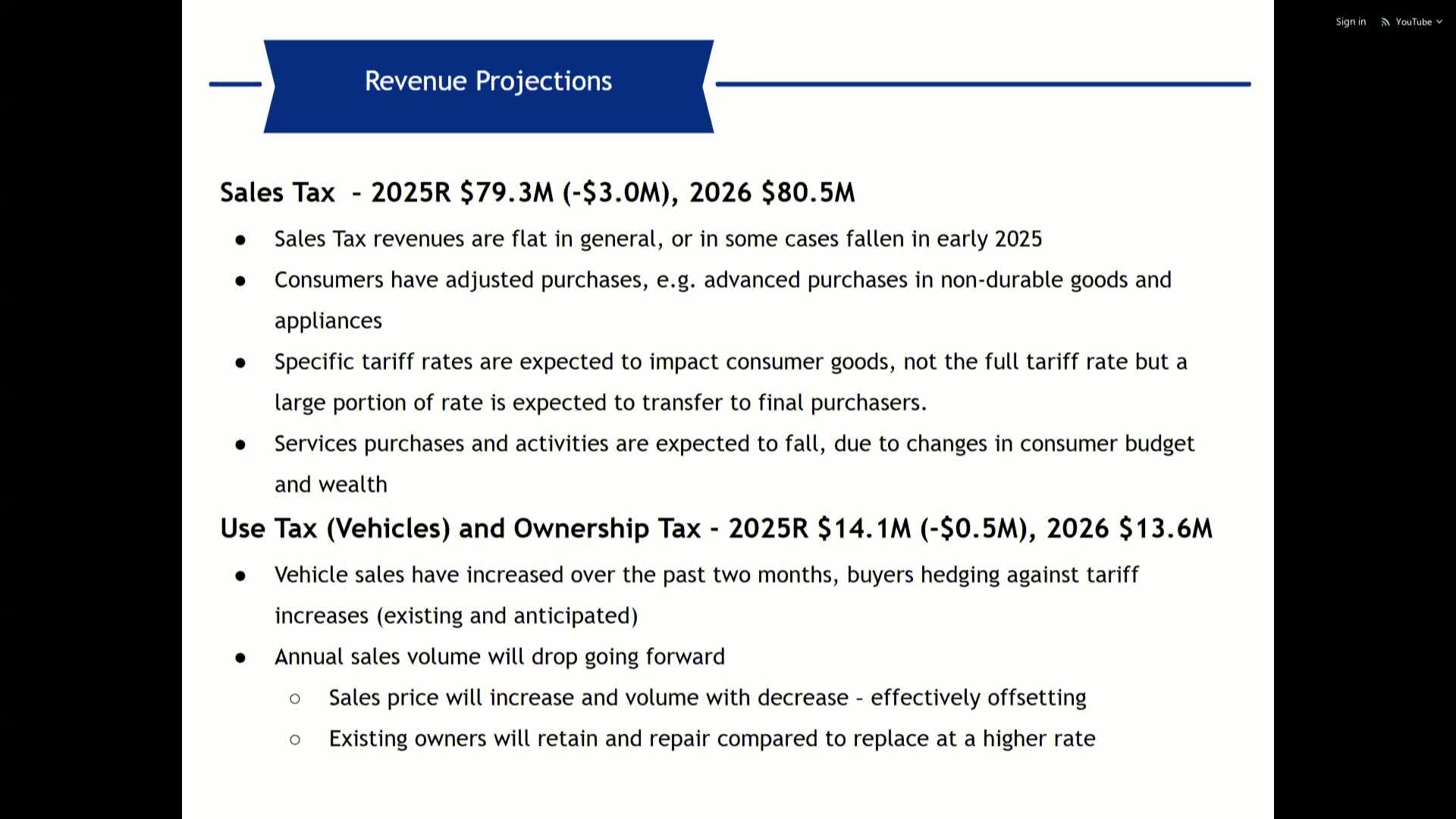Broomfield forecasts $1.2M sales tax increase amid vehicle use tax changes
May 08, 2025 | Broomfield City, Broomfield County, Colorado
Thanks to Scribe from Workplace AI , all articles about Colorado are free for you to enjoy throughout 2025!

This article was created by AI using a video recording of the meeting. It summarizes the key points discussed, but for full details and context, please refer to the video of the full meeting. Link to Full Meeting
The council began by addressing a projected reduction of $3 million in sales tax revenue for the current year, with expectations of a rebound in 2026, estimating an increase of approximately $1.2 million. The discussions highlighted a shift in the city's revenue sources, noting that use tax from vehicle purchases has now surpassed that from building materials. This change reflects a broader trend in the community's economic activity, as the population stabilizes while vehicle sales remain strong.
A detailed explanation of use tax was provided, clarifying that it functions similarly to sales tax but is collected based on the consumer's location rather than the business's. This means that when residents purchase vehicles outside of Broomfield, they still contribute to the city's revenue through use tax, which is applied to the location where the vehicle is registered.
The council also discussed the specific ownership tax associated with vehicle licensing, which decreases over time as the vehicle depreciates. This tax is expected to remain significant as residents hold onto their vehicles longer, impacting overall revenue projections.
Looking ahead, the council anticipates a half-million dollar reduction in use tax revenue for 2025 compared to earlier forecasts. They acknowledged that external factors, such as tariffs and interest rate changes, could further influence these projections, with plans to revisit the financial outlook in August.
In summary, the meeting underscored the evolving landscape of Broomfield's tax revenues, particularly the growing importance of vehicle-related taxes, and set the stage for ongoing financial assessments as the city navigates its economic future.
Converted from City of Broomfield, City Council Study Session - May 8, 2025 meeting on May 08, 2025
Link to Full Meeting
Comments
View full meeting
This article is based on a recent meeting—watch the full video and explore the complete transcript for deeper insights into the discussion.
View full meeting
